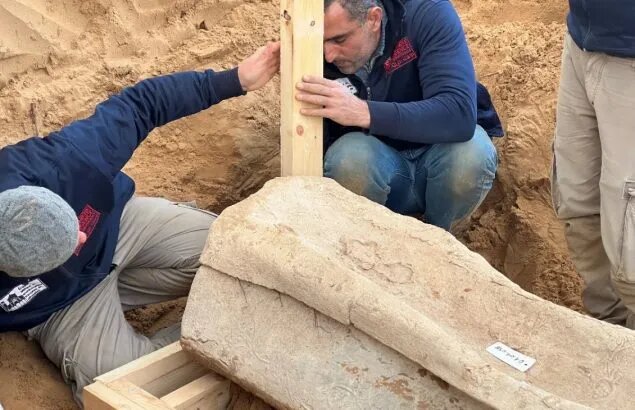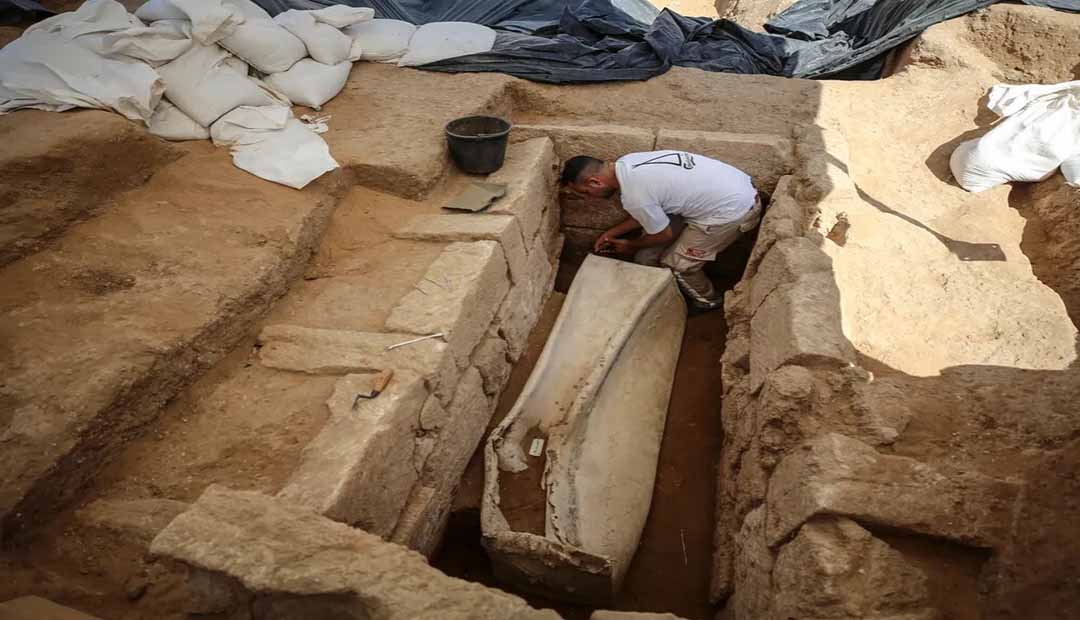Roman-Era Cemetery With Over 100 Tombs Unearthed in Gaza
Archaeologists have unearthed two rare lead sarcophagi and at least 125 tombs at a Roman-era cemetery in Gaza.
The series of finds is “unprecedented,” says Jamal Abu Reida, general director of Gaza’s antiquities ministry, to Reuters’ Nidal Al-Mughrabi.
Construction crews discovered the site, which stretches over 43,000 square feet, while working on an Egyptian-funded housing project last year, according to Ellen Francis of the Washington Post. It’s remarkably well-preserved: Roman aristocrats were likely buried in the graves, many of which still contain skeletal remains, reports Hyperallergic’s Elaine Velie. Some still have coins in their mouths, thought to help secure a safe journey to the underworld.
“It’s rare to discover an intact Roman burial site, where nothing has been stolen,” says Anthony Dutemple, the head of mission in Palestine for Premiere Urgence Internationale (PUI), a French humanitarian group, to the Art Newspaper’s Hadani Ditmars.

Researchers working at the sprawling site found the first lead sarcophagus, which is decorated with reliefs of grapes and vines, earlier this year. The discovery of a second lead sarcophagus, which is engraved with dolphins, was announced last month.
The cemetery is located less than a mile from the ancient Mediterranean port city of Anthedon, which was inhabited by “a succession of ancient societies, including Persians, Greeks, Romans and early Islamic cultures” between 800 B.C.E. to 1100 C.E., per Hyperallergic.
The excavation—a joint effort between PUI and the French School of Biblical and Archeological Research (EBAF) in Jerusalem—employed about 30 recent graduates from Gaza’s Islamic University and the University of Palestine. The project is meant to offer the young researchers a chance to engage with Palestinian cultural heritage and gain dig experience in Gaza, where archaeological tools and technologies are difficult to access, according to the Art Newspaper.
“In Palestine, in a society deeply affected by the Israeli occupation, culture and heritage are vital elements in keeping hope alive,” Dutemple tells Hyperallergic.

In June, experts moved the first lead sarcophagus to a museum in Gaza’s Qasr al-Basha museum, where it will be “one of the centerpieces of the museum’s collection,” according to the EBAF. The team is now working to clean remains and piece together clay jars found at the graves, and investigations at the site will continue for a number of months.
Fadel Al-A’utul, an archaeologist at the EBAF, hopes the cemetery can eventually become a tourist destination with its own museum to display the discovered artifacts.
“We need funds to preserve this archeological site so that history does not get washed away,” he tells Reuters.




